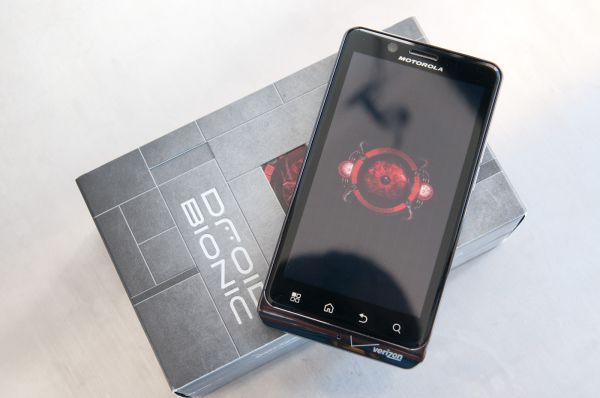Motorola Droid Bionic Review - Dual Core with 4G LTE
by Brian Klug on October 11, 2011 1:55 AM EST- Posted in
- Smartphones
- LTE
- Motorola
- OMAP 4
- Mobile
- motorola droid bionic
Conclusion & Final Thoughts
The Bionic is the first smartphone we’ve seen to date that combines 4G LTE connectivity with a dual core SoC, ending a surprisingly long period where those two were mutually exclusive. The result is what’s currently the best cross section of features on paper, and a shockingly speedy experience.
The Bionic’s stock battery life isn’t far behind the other LTE smartphones, but it’s also not any better than them. That kind of performance is very indicative of where we should expect things to sit until 28nm LTE basebands and SoCs start arriving on the scene in 2012. If you don’t have access to a microUSB charger for at least a few hours during the day, the standard battery might be too much of a stretch. If you’re in that situation, the extended battery is an absolute necessity.
Though this Bionic isn’t the phone we were shown at CES, the result of being kicked back to the drawing board is overall pretty positive. The problem is that the incurred delay puts the Bionic right up against another phone with a dual core OMAP 4460, LTE, and a new build of Android. It would be a disservice to readers to not at least make mention of the Nexus Prime somewhere in this review, but my thoughts are still to wait and see what that device has to offer. I wouldn’t expect battery life to differ all that much however, given the same combination of features.
I sound like a broken record, but the Bionic really is a combination of the Droid 3’s software load and SoC, the Droid X2’s display and form factor, and a Motorola 4G LTE baseband. It’s a combination that finally breaks the mutual exclusivity that dual core and 4G LTE have had since Verizon’s 4G LTE launch. The Bionic that we saw and played with at CES never really saw the light of day, and yet I feel like this “Targa” turned Bionic does the promise of being the first dual core smartphone with 4G LTE justice. Even though the Nexus Prime is looming eerily on the horizon as of this writing, if there’s anything I’ve learned in the smartphone space, it’s that it is usually better to be first, than better, and you have to hand it to the Bionic for being first to dual core with LTE.












64 Comments
View All Comments
wpwoodjr - Wednesday, October 12, 2011 - link
That would be really cool, thanks!vol7ron - Wednesday, October 12, 2011 - link
1) It would be nice to see the SpeedTest in CDMA/3G EVO (since you did the browser side-by-sides)2) It would be nice if you added a counter in addition to saying done
3) Is that a placemat in the background? I think I have the same set from Target :)
crankerchick - Friday, October 14, 2011 - link
Thanks for the thorough review. It's wonderful to have more in-depth looks at device performance and comparisons to the competition.While I don't think the Bionic is the next phone for me, it's good to see where things have progressed to. With the impending release of the HTC device (Rezound?) and Samsung with ICS (Nexus Prime/Galaxy Nexus??), I'm placing my bets on one of those for me. Who knows, maybe even an iPhone 4S is in my future. Motorola continues to disappoint the tech crowd with their locked bootloaders, but otherwise have pretty impressive device offerings, the Bionic no exception.
LTE Fever - Sunday, November 20, 2011 - link
The HTC Rezound is giving me very bad trouble with the hotspot and staying connected to LTE.On my Bionic however I was able to hit 52 down and 14 up in Birmingham, AL which would bring it over the UE Cat 2 specs
http://www.speedtest.net/android/94284031.png